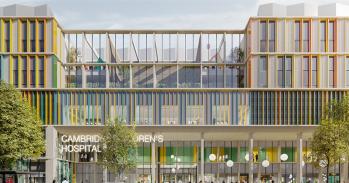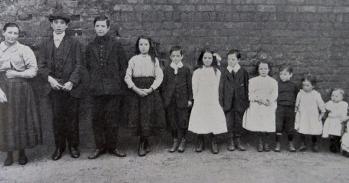
Faced with filling in the 2011 census form plenty of people will be tempted to put frivolous answers into the boxes asking for details about their lives. 200 years ago, a Norfolk vicar had similar ideas.
Faced with filling in the 2011 census form plenty of people will be tempted to put frivolous answers into the boxes asking for details about their lives. 200 years ago, a Norfolk vicar had similar ideas.
When one morning my eyes lit on the records for Middleton, I was alone in my office in Cambridge and I actually laughed out loud – I was so happy to be sharing a joke with someone who lived 200 years ago and was clearly trying to enliven the tedium of record-keeping.
Dr Peter Kitson
In the last census ‘Jedi knight’ emerged as the fourth most popular religion and it is expected that ‘heavy metal’ will figure strongly this year. Those determined to have a spot of fun with their answers should, however, be prepared for a fine as it is an offence to supply inaccurate information.
New research has revealed that in the early nineteenth century, the maverick vicar of the tiny parish of Middleton in Norfolk had no qualms about being creative with the truth. Every time there was a birth in the scattering of farms and cottages around the church of St Mary, it was his duty to record the details of the new child including the “qualification, trade or profession” of the father (or failing that, make some reference to the mother) – the equivalent to question 34 in this year’s census.
Taking up his pen, the Very Reverend Dr Peter Scrimshire Wood inscribed a series of wonderfully fanciful job descriptions into the parchment-bound parish baptism register. Among the mention of the mundane (coachman, labourer, farmer, workman) he added occupations that speak volumes about his sense of humour and his far-from-impartial opinions of the people involved.
Listed for 1819 are “lamb gelder”, “chopper of chips”, “good workman”. During the following year, warming to his theme, he listed “cut throat of pigs”, “publican and beggar maker”, “turn coat and knight of the needle”, “master of the rolls and burn crust”, “farmer and fortune hunter” and – perhaps best of all – “cabbage gelder”. Not a man to mince words, he listed mothers of illegitimate children as “whore and man trap”.
Cambridge historian Dr Peter Kitson came across the delightfully quirky entries in the Middleton baptism register while processing data from the 800 or so parishes of rural Norfolk from the early 19th century.
Kitson is one of a team of Cambridge University historians and geographers undertaking the biggest ever survey of occupations in England and Wales from 1379 to 1911. Their key source materials are the eight detailed censuses of occupations carried out between 1841 and 1911, and the 11,400 parish registers housed in county record offices up and down the country.
Tabulating and analysing vast amounts of data is a relentless task. “When one morning my eyes lit on the records for Middleton, I was alone in my office in Cambridge and I actually laughed out loud – I was so happy to be sharing a joke with someone who lived 200 years ago and was clearly trying to enliven the tedium of record-keeping,” said Kitson.
“After sharing my find with my colleagues, I began googling for some of the terms I’d come across and working out what they were. Some – like crispin which means shoemaker and manuary which means someone engaged in manual work – are obscure terms while others are pure inventions – cabbage gelder for market gardener or greengrocer. It’s been fun to decipher the thinking behind the entries – and to speculate why the compiler of the register felt the urge to do this.”
It turns out that the archivists at Norfolk Record Office in Norwich, where the Middleton baptism register is held, had also been chuckling about the entries. “The Very Revd Dr Wood was vicar of Middleton from 1810 to 1856, a very long period of incumbency, but he made his irregular comments in the register only between 1818 and 1822,” said Norfolk County Archivist, Dr John Alban.
“Why did he start writing entries of this kind and then suddenly stop? Was he merely being mischievous or did he have a rather low opinion of his parishioners, as some of the comments suggest? We shall probably never know the answers, although a baptism entry for one of his many children reveals a streak of eccentricity. On 14 May 1815, inspired by current affairs, he christened his own daughter Congress Vienna Amelia Wood.”
There is, of course, a much more serious side to the research being undertaken by Kitson and his colleagues. Starting in 1911 and working backwards through the nineteenth and eighteenth centuries to the ultimate target of 1379, the project will enable scholars to follow the changing occupational structure of England and Wales. A series of maps, some of which are already available online, now show the distribution of occupations throughout the country at the time of each census.
“It’s fascinating to see how occupations were distributed – for example, how many bakers there were in southern England in 1851 and how few bakers there were in the North. Presumably that’s because people in those areas baked their own bread. The data also enables us to trace the clustering of occupations, such as the growing concentration of textile-related jobs in Lancashire and Yorkshire,” said Kitson.
“Before 1800 the majority of occupations were land based – with hundreds of thousands of people employed in farming. And the greater part of industry was craft based with small scale industries taking raw materials right through to the finished product – straw plaiting in Bedfordshire to make hats, wood processing to make paper in Buckinghamshire, and so on. During the 1700s and 1800s profound changes took place with industrialisation drawing the workforce away from the rural areas and into the city.”
This work is licensed under a Creative Commons Licence. If you use this content on your site please link back to this page.





